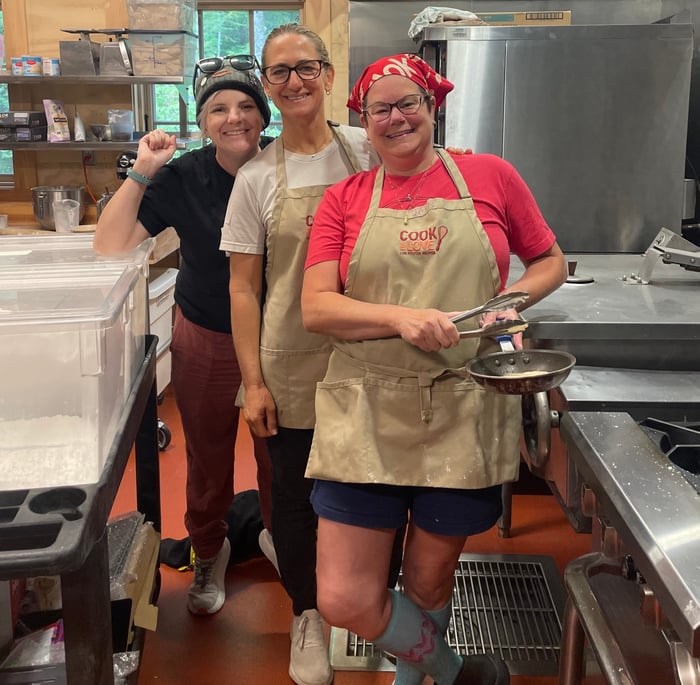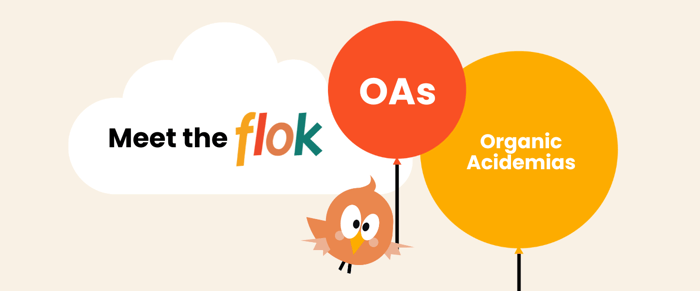Meet Jenn Beazer, flok’s Registered Dietitian and low-pro cook extraordinaire. If you have attended flok Family Camp over the years, you’ve experienced her delicious cooking and her side-splitting comedy routines at the Talent Show. Behind the scenes, she maintains the flok app food database, ensuring our community members have the most accurate data possible when looking up foods to track their diets.
When you view a food in the flok app, you see its protein and amino acid content. What you can't see is the decades of nutrition expertise that brought you those values. We’re taking you behind the scenes with Jenn to explore flok’s food science—because when it comes to managing our diets, a nutrition label only scratches the surface.
Food as Medicine
For those managing inherited metabolic conditions, food is more than nutrition—it’s the foundation of our medical care. Following a low-protein diet and limiting certain amino acids (depending on the condition) is vital for healthy development, brain function, and overall well-being. However, food labels don’t include amino acid content—or even protein content—to the level of detail we require.
“Nutrition fact labels don’t contain unrounded protein values,” explains Jenn. “Those numbers are key for our flok community to manage their diets."
To fill this gap, Jenn translates complex amino acid data into clear, reliable information that's provided by the flok app—making it easier to choose foods that fit your specific needs. The flok app includes detailed nutritional content for six key amino acids relevant across our conditions: isoleucine, leucine, methionine, phenylalanine, tyrosine, and valine.
To understand how Jenn’s work connects to what’s on your plate, consider green peas: they have nearly 16 times more leucine than phenylalanine (phe). That means peas are less suitable for someone with MSUD (who limits leucine) than for someone with PKU (who counts phe). Jenn channels this expertise into the flok app so our community can get a full picture of what’s in their food to guide daily choices. Jenn explains:
“Fruits, vegetables, nuts, and legumes all have varied amino acid profiles. Understanding the six amino acids is important for expanding our nutrition data to serve all the inherited conditions of protein metabolism.”  Jenn (far right) cooking at Family Camp How flok Ensures Reliable Food Data
Jenn (far right) cooking at Family Camp How flok Ensures Reliable Food DataWith more than 20 years of experience in metabolic nutrition, Jenn estimates protein and amino acid content through a detailed, scientific process:
- Obtain unrounded protein content from food manufacturers through outreach and the Feed Our flok program
- Evaluate the ingredient list for protein-containing foods
- Apply amino acid-to-protein ratios to estimate amino acid values
- Cross-check data across trusted sources like Genetic Metabolic Dietitians International (GMDI) database
Some of the food values in the flok app have also been determined through lab testing in flok’s Amino Acid Analysis Program. Both approaches are tailored to give full amino acid profiles of foods that are widely used by our community.
“The bulk of foods we research have been requested by our community members—that’s the priority.”
From reviewing labels to overseeing amino acid testing, Jenn makes sure the flok app food database is backed by research. When you request information on a new food, Jenn and a committee of metabolic dietitians validate the data before it appears in the app.
Empowering the flok Community
 Jenn (left)
Jenn (left)For our community, accuracy isn’t optional—it’s essential. “Knowing the exact amino acid content of foods helps people with IMDs eat safely and feel satisfied,” Jenn says. “My goal is to make sure they can enjoy as many foods as possible to improve their quality of life.”
flok partners with food companies—like Daiya and So Delicious—to get data for new products. This collaboration ensures the flok app grows with the evolving food landscape—and with your needs.
Looking Ahead
As flok’s food science evolves, Jenn’s work expands access to reliable nutrient data across our conditions. Every food request, company partnership, and database update adds to a legacy 36 years in the making—deepening our understanding of how nutrition affects overall health.
"As people use the flok app, we can begin connecting daily diet, biometrics, symptoms, and our development over time. With longitudinal data, we can start seeing meaningful patterns emerge.”
From our earliest food lists to today’s flok app food database, flok’s foundation of trusted data continues to grow—serving more people, in more ways, than ever before.
For more detail on flok’s unique approach to food science, click here.



